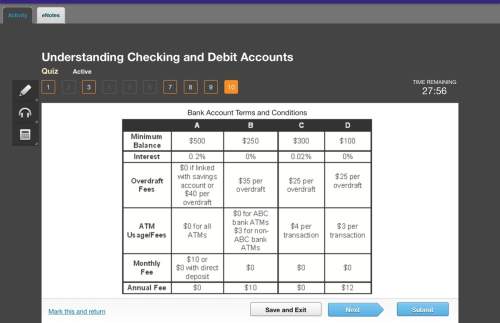
Business, 26.02.2020 03:12 datboyjulio21
The shirt shop had the following transactions for T-shirts for 2016, it, s first year of operations:
Jan. 20 Purchased 400 units @ $ 8 = $3,200
Apr. 21 purchased 200 [email protected] $10 = $ 2,000
july 25 purchased 280 units @$ 13 =3,640
sept, 19 purchased 90 units @$15 =1,350
During the year , the shirt shop sold 810 T-shirts for $30 each.
a. Compute the amount of ending inventory the shirt shop would report on the balance sheet, assuming the following cost flow assumption (1) FIFO (2) LIFO (3) weighted average
b. Record the above transactions in general journal form and post to T- account assuming the FIFO, LIFO, weighted average methods. Use a separate set of journal entries and T-accounts for each method . Assume all transactions are cash transactions
c. Compute the difference in gross margin between the FIFO AND LIFO cost flow assumption

Answers: 1


Other questions on the subject: Business

Business, 22.06.2019 17:20, sctenk6052
“strategy, plans, and budgets are unrelated to one another.” do you agree? explain. explain how the manager’s choice of the type of responsibility center (cost, revenue, profit, or investment) affects the behavior of other employees.
Answers: 3

Business, 23.06.2019 00:00, laylaaaaah2054
3. which of the following occupations relate to a skill category of mathematics and data? select all that apply. (2 correct answers) engineer financial analyst mechanic sales person 4. which of the following occupations relate to a skill category of words and literacy? select all that apply. (2 correct answers) educator lawyer marketing manager psychologist architect
Answers: 1

Business, 23.06.2019 00:40, derisepicowe0fa
An upper-middle-class manager tends to have hostile relationship with the working-class employees in the firm because of his tendency to perceive himself as superior to them based on his class background. in this example, the manager exhibits: question 14 options: 1) class consciousness. 2) cultural awareness. 3) social mobility. 4) group orientation.
Answers: 3

Business, 23.06.2019 03:00, riamspmau
In each of the cases below, assume division x has a product that can be sold either to outside customers or to division y of the same company for use in its production process. the managers of the divisions are evaluated based on their divisional profits. case a b division x: capacity in units 200,000 200,000 number of units being sold to outside customers 200,000 160,000 selling price per unit to outside customers $ 90 $ 75 variable costs per unit $ 70 $ 60 fixed costs per unit (based on capacity) $ 13 $ 8 division y: number of units needed for production 40,000 40,000 purchase price per unit now being paid to an outside supplier $ 86 $ 74 required: 1. refer to the data in case a above. assume in this case that $3 per unit in variable selling costs can be avoided on intracompany sales. a. what is the lowest acceptable transfer price from the perspective of the selling division? b. what is the highest acceptable transfer price from the perspective of the buying division? c. what is the range of acceptable transfer prices (if any) between the two divisions? if the managers are free to negotiate and make decisions on their own, will a transfer probably take place?
Answers: 3
You know the right answer?
The shirt shop had the following transactions for T-shirts for 2016, it, s first year of operations:...
Questions in other subjects:

Mathematics, 21.11.2020 14:00

English, 21.11.2020 14:00

Biology, 21.11.2020 14:00


English, 21.11.2020 14:00

Mathematics, 21.11.2020 14:00


Mathematics, 21.11.2020 14:00

Mathematics, 21.11.2020 14:00

Mathematics, 21.11.2020 14:00




